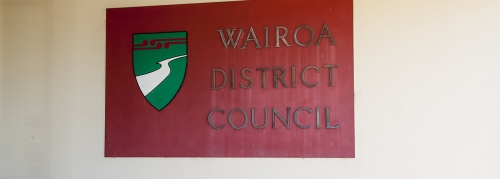


Current filter:

Wairoa District Council has the fourth lowest rates in the country, a new report has revealed.
The 2018 ratepayers’ report, just released by the New Zealand Taxpayers’ Union, shows Wairoa’s average rates are the second lowest rural council rates in New Zealand and the lowest overall average rates in the North Island.
The report reveals Wairoa’s low rates are on the back of below average operational and staff costs and debt level.
Wairoa’s average rates are $1,779 with only three South Island councils having lower average rates.
The report states the average rural council rates are $2,161 which is $382 above Wairoa, and the national average $2,304.
Wairoa’s total operating expenses per ratepayer are $3,408, well below the rural council average of $3,750 and national average $3,776.
Wairoa Council’s staff costs per ratepayer are $569 compared with the average for rural councils of $728 and national average $815.
The report notes that across the country, council borrowing continues to skyrocket and on average councils have increased the share of debt for each of their ratepayers by 5.3 percent in borrowing in just a year.
Wairoa has bucked that trend and out of the country’s 66 councils has the 14th lowest debt loading.
Wairoa’s borrowing costs per ratepayer are $42 compared to the average for rural councils of $77 and national average $153.
Mayor Craig Little says it is great to see an independent group like the Taxpayers’ Union confirming that the Wairoa district has rates that are reasonable, and the council is operating within its means.
“Our goal has always been to keep our spending, and therefore our rates, as low as possible while still trying to grow the potential of our district.
“This Council has proven that even with our challenges of a large and isolated area and small population we are able to cut our cloth and look after our residents while keeping our rates at an affordable level.
“Keeping our rates as low as possible has always been this council’s aim. It is a careful balance and based on decisions made by councillors who are rate payers too, so they are also living the reality.
“This report confirms we have outperformed across a range of different measures. It validates we are on the right track and I take my hat off to the Councillors and Council staff who have helped achieve this.
“It is more than just low rates, it is also about prudent operational spending and wages and controlling debt levels in a spiralling environment.
“Every council has its critics and I hope the data in the New Zealand Taxpayers’ independent report clarifies where all councils, including Wairoa stand.
Mr Little’s remuneration is $68,359, significantly below the average for rural councils of $75,517 and the national average of $108,072.
Wairoa’s chief executive remuneration of $190,350 is also well below the rural council average of $229,019 and national average of $298,149.
Wairoa’s average councillor remuneration of $24,265 is slightly above the rural council average of $21,476 but still well below the national average $36,433.
Dollars spent in affiliation with Local Government New Zealand were $67,902, above the rural council average of $40,939 and national average $66,351.
The total spent in affiliation with SOLGM, the national membership organisation for local government, of $25,146 was also above the rural council average of $20,070 but below the national average $36,397.
Mr Little had no concerns the LGNZ and SOLGM spends saying the two groups provide expertise and advice that is vital for a small and isolated council like Wairoa.
“I would be more concerned if we weren’t investing in this cost-effective way to receive top specialised advice on local government matters. I value the ability we have to tap into this resource.”
Council staff also came up trumps.
The report confirmed at the time of data being collected Council employed 52 staff members with four earning above $100,000. That equates to eight percent of staff earning above that threshold, less than the rural council average of 10 percent and the national average of 11 percent.
The report stated there were no performance-related dismissals in the 12-month period and the average number of sick days per staff member was a low 1.1 or total sick days for all staff of 59 days over the period.
Regionally Wairoa’s average rates of $1779 compare to Central Hawke’s Bay $2555, Napier $1947, Hastings $2153 and Gisborne $3096.
The report stated Wairoa has the second lowest rural council rates, just higher than Mackenzie District Council which has an average rate of $1593.
Of the 23 rural councils Wairoa has the fifth smallest population at 8220 and in the higher bracket of land masses with an area 4077km.
The Taxpayers’ Union is an independent organisation which holds councils to account by championing value for money from every tax dollar as well as advocating for lower taxes, less waste and more transparency.
The Taxpayers’ Union stated all information in the report was compiled from official information requests and the most recent annual reports published by each council.
For the full report visit taxpayers.org.nz
31 October 2018
Disclaimers and Copyright
While every endeavour has been taken by the Wairoa District Council to ensure that the information on this website is
accurate and up to date, Wairoa District Council shall not be liable for any loss suffered through the use, directly or indirectly, of information on this website. Information contained has been assembled in good faith.
Some of the information available in this site is from the New Zealand Public domain and supplied by relevant
government agencies. Wairoa District Council cannot accept any liability for its accuracy or content.
Portions of the information and material on this site, including data, pages, documents, online
graphics and images are protected by copyright, unless specifically notified to the contrary. Externally sourced
information or material is copyright to the respective provider.
© Wairoa District Council - www.wairoadc.govt.nz / +64 6 838 7309 / customerservices@wairoadc.govt.nz